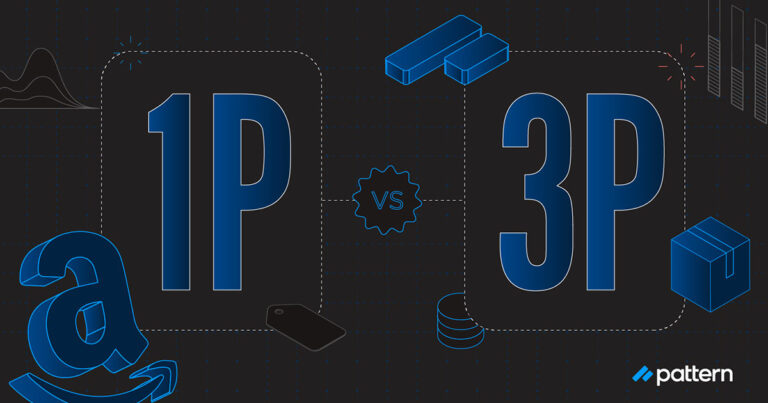So you’ve got a product, and you’re trying to sell it on Amazon. You might be wondering, “How many sellers should I have?” Is more truly merrier? Or is being exclusive the better option?
The truth is that bigger isn’t always better in ecommerce. The more sellers you have, the harder it gets to control your brand online. This can lead to price erosion and create other nasty situations that eat into your brand’s profitability and ultimately its growth.
So what about a more exclusive relationship? When successful, an exclusive seller relationship on Amazon and other marketplaces can put all of the cards in your corner, give you maximum control of your brand, and help you offer a stellar customer experience that’s harder to maintain with a bigger pool of sellers. While having an exclusive Amazon seller isn’t for every brand, it may be a great fit for yours.
The most common ecommerce selling models
Before we dive into the advantages and risks of an exclusive seller relationship, it’s helpful to look at the other ecommerce selling models that are available to brands to get a sense of how an exclusive seller compares.
There are seven common ecommerce operating models that brands can look at when deciding their online strategy:
- 3P Unmanaged: This is the most chaotic of the models. In a 3P Unmanaged scenario, there’s no active management of your brand, which means you have no control on pricing, inventory, or content.
- 1P: This model is when you sell your product directly through a retailer. It gives you listing control, merchandising, and up-front POs but also limits your inventory and gives you no pricing control. It can also be expensive.
- 2P: 2P is the Fulfilled by Amazon (FBA) model. You don’t have to negotiate with Amazon with FBA (a big plus) and it requires limited investments, but it also gives you no control on pricing, inventory, listings, or advertising.
- 3P: In this model, you are the retailer. You own and ship your products without going through Amazon’s fulfillment centers. In the 3P model, you have a potential for higher margins and better control on inventory, listings, advertising, and merch, but you have limited capabilities and it takes a larger chunk of investment.
- Hybrid: This model leverages the 1P and 3P strategies. You have inventory control, lower risks, and better negotiating power, but you also have to navigate Amazon’s buyers and maintain compliance with their policies.
- 3P Network: This is the “more the merrier” model we talked about earlier where you work with a network of authorized sellers. A 3P Network gives you pricing control, inventory control, and diversified risk, but it also gives you less control and can eat into your margins.
- 3P Partner: When we talk about having an exclusive ecommerce seller, this is what we mean. In the 3P Partner model, you work with one partner to sell your product. We’ll dive into the pros and cons of the 3P Partner model below.

Advantages of a 3P Partnership
There are many notable benefits that come from working with an exclusive Amazon seller rather than the other selling models we reviewed previously.
Simplicity
Instead of dealing with ten different sellers or a big master distributor that sells to these sellers, working with one seller makes directing your strategy much more streamlined.
Concentrated expertise and investments
Working with one partner eliminates the chaos of working with many partners with varying degrees of proficiency in different marketplaces. The right 3P partner is very motivated and well-equipped with the tools to improve the performance of your products and help your brand succeed. They’ll provide focused attention on investments for content, SEO, and customer service.
Buy Box and ad spend consistency
You are guaranteed Buy Box ownership with an exclusive Amazon seller. Pretty exciting, right? In addition to giving you the Buy Box, having a single seller allows you to maintain consistency in your ad performance and ad spend because there aren’t multiple sellers with different advertising strategies vying to win the Buy Box and causing Buy Box suppression.
Price integrity
The risk of price erosion goes up when you’re working with multiple sellers because partners are more incentivized to get ahead of the competition (read more on our eBook about the Profitability Death Spiral). With a 3P partner relationship, competition goes away. You’re able to maintain price integrity and create price sustainability across all distribution channels.
More seller accountability
An exclusive Amazon seller who abides by your policies makes your life significantly easier, because you don’t need to play whack-a-mole to hunt down sellers breaking the rules. Enforcement and accountability are far more linear. Not to mention, this model is available across more marketplaces for brands who have a global presence.

Risks of a 3P Partnership
Although there are myriad benefits to having an exclusive Amazon seller, there are some risks you should be aware of if you’re considering this model for your brand.
All of your eggs are in one basket
This is the clearest risk of distributing your product through an exclusive Amazon seller. If something happens to that seller, maybe they go out of business or they mess up on their warehouse orders or get shut down by Amazon, that can leave your brand very exposed and even cut off your distribution completely.
Channel stuffing is limited
Some brands do really well by stuffing the channel with lots of inventory, even if it’s unsold inventory (channel stuffing allows distributors to temporarily increase their sales figures and profit measures). By working with a 3P partner, your ability to channel stuff is limited, because the relationship between what you sell to your exclusive seller and what they end up selling to the end customer is very linear.
Your partner has more leverage
By choosing one seller, you’re creating an interdependent relationship where your partner has more leverage. If they decide they aren’t going to sell your product, you’re left scrambling because you don’t have redundancy built into your partnership.
In a 3P relationship, a seller can tell you they need an additional two points of margin to make their business work. You either need to acquiesce to their demands or find a new partner and start over. This can make 3P relationships daunting.
Do the advantages outweigh the risks?
While there are some risks, having an exclusive Amazon seller ultimately gives your brand greater growth and more control (see our case study with Thorne). Brands who have chosen a 3P partnership have streamlined their sales process and seen big successes as a result (browse Pattern success stories here). The key is choosing the right partner.

This is where Pattern can help.
Pattern is an exclusive Amazon seller that uses data and technology to help brands optimize their performance on the marketplace. We help your brand thrive in every possible category, including SEO, advertising, product photography, customer service, returns, shipping, and more, at no additional cost.
We operate as an exclusive Amazon seller so that we can provide personalized attention and the best outcomes for your brand. We don’t charge our brand partners anything for our services so that our incentives are exactly aligned with theirs—selling more on marketplaces and growing profitable revenue.
If you’re interested in learning more about having an exclusive Amazon seller, other ecommerce models that may work for your brand, or a partnership with Pattern, contact us in the form below.





